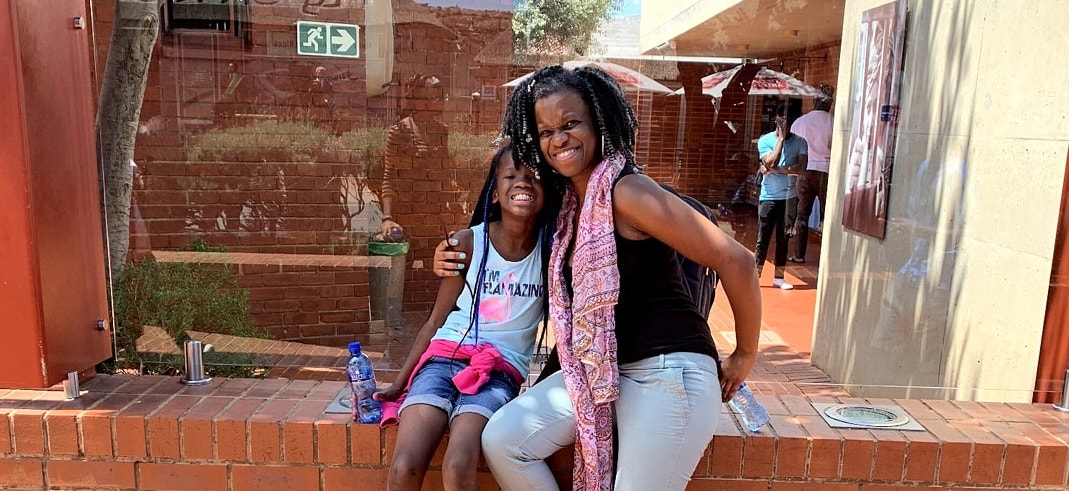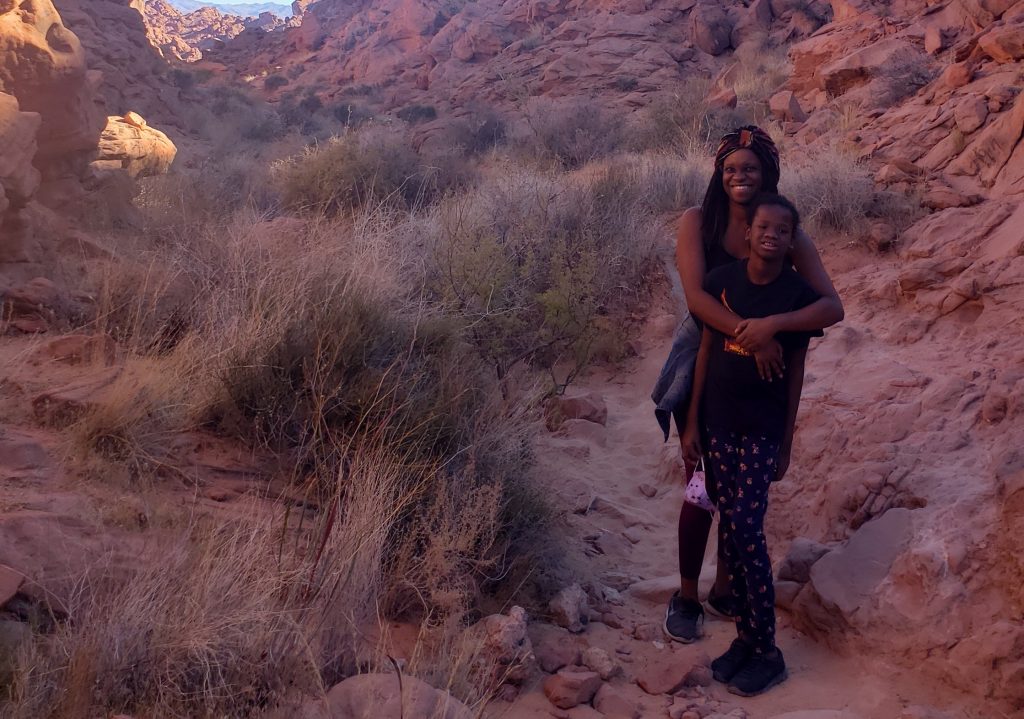Edna’s Story: Debt-Free Since 2017

Meet Edna, a speech pathologist who lives with her daughter in Las Vegas, Nevada.
Did the pandemic impact you?
I’m a self-employed speech pathologist. Fortunately, I wasn’t financially affected by the pandemic. If anything, my business grew. I attribute that to running my business on the leaner side before COVID. Initially, there was a month where I didn’t see anyone in person, but by summer, I was completely booked.
My daughter is in fifth grade currently. Her school has been online since the pandemic started last year. She’s looking forward to going back in person very soon! I recently set up in-person tutoring for her, so she’s doing those 2 – 3 days a week.
Have you and your daughter talked about money management?
My daughter has her own bank account. She gets an allowance based on certain things she does. Right now, she’s saving for games and college. I’m proud that she’s learned the value of money.
Tell me more about your business.
I started my Speech Path business in 2018 and was fully self-sufficient by 2019. When the pandemic hit, I’d only been on my own for 6-7 months. I knew that even if I didn’t have clients, I would be okay because I had saved up a year’s worth of living expenses.
What is your history with paying off debt?
In 2012, I started to get serious about paying off my debt. I had a reality check in 2016 when my dad got really sick. I decided I needed to get out of debt permanently and create a better financial plan for the future. The Budgetnista’s Facebook Group, Dream Catchers, introduced me to SaverLife.
SaverLife has helped me be more accountable with my savings. I’ve learned to pay myself first, which includes paying off my debt. I was debt-free by the end of 2017. I thought, “I don’t want to go down this road again.”

Once I became debt-free, I put aside the same amount of money I’d use to pay off my debt into a savings account. I took a part-time job that went straight to paying off my debt. The pandemic reminded me how important it is to have an emergency fund. If I’d kept up with my old financial habits, things could’ve gone the other way. After I built my emergency fund, I learned more about investing. That’s helped me a lot because I was about to build my own business without taking out any loans.
When I was in debt, I would pay off debt and put money in savings first. I unfollowed a lot of people and companies on social media that I felt would tempt me to use my credit card and spend money on unnecessary items. I was lucky enough to have found an accountability partner.
How did you find out about SaverLife?
I found out about SaverLife a few years ago when it was called EARN. SaverLife has definitely helped me save. Today, I have multiple savings accounts totaling up to about $40,000. If it wasn’t for SaverLife, I still would have gotten there, but it would have taken a lot longer.
Saving money became easier after I was able to stash away $5,000. That was the magic number for me. Up until then, it felt like every time I put money in my emergency fund, something would happen and I’d need to use my savings.
What are your favorite SaverLife features?
I like going on the community forum to chat with other members about their experiences with money. The Money 101 articles are really helpful, too. Lastly, I like the ongoing savings challenges. Since joining, I’ve referred many people to SaverLife.
What would you tell someone who’s thinking about joining SaverLife?
Remember that savings doesn’t happen overnight. There are no shortcuts. Know that there are other members in the community forum and in the Saver Stories section that are in similar financial situations. The pattern of saving will not be a linear trajectory.